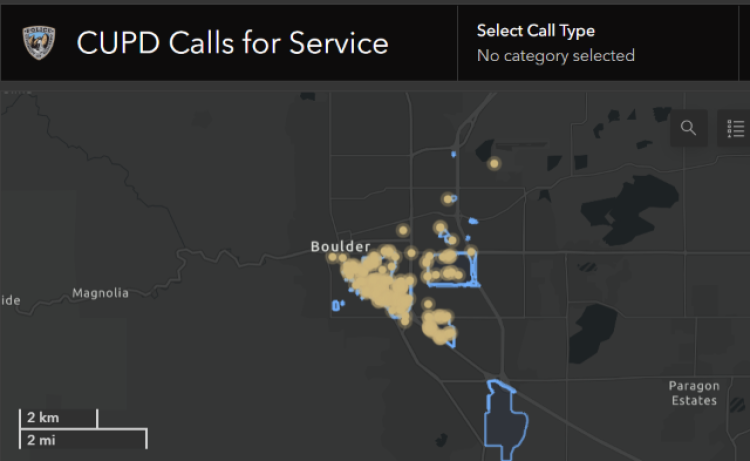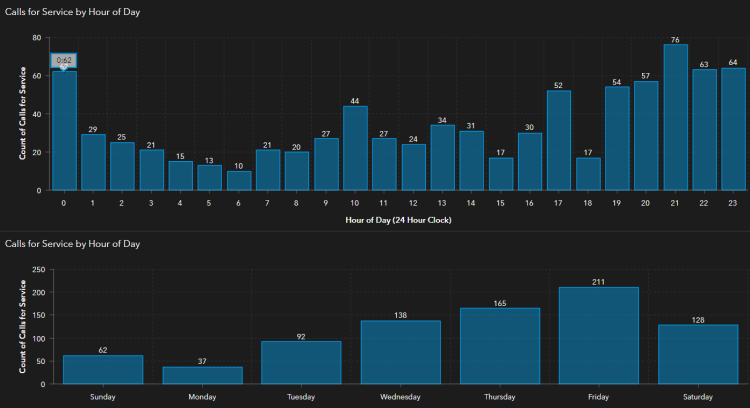CU police embrace growing trend toward transparency with crime data
The University of Colorado Boulder Police Department recently launched two crime dashboards, one showing calls for service on campus, including those initiated by emergency calls from citizens as well as calls initiated by officers. The second dashboard shows incidents reported to CUPD, including incident type and location.
The dashboards will be updated automatically every 24 hours and show crime data for a range of dates, which can be selected by the user. Data on the calls for service dashboard is collected from CUPD’s computer-aided dispatch system, which is used by 911 dispatchers throughout Boulder county to record incident calls and prioritize police response. Data from CUPD’s records management system is used for the police incidents dashboard.


Screenshots of the new CUPD calls for service dashboard
CUPD’s crime data dashboards are part of a growing trend among public safety agencies toward sharing crime data with the community, and is similar to the Boulder Police Department dashboard, showing calls for services in the city of Boulder. The Boulder County District Attorney’s Office also recently launched its own data dashboard, providing the community with information on criminal case referrals and outcomes.
Dashboards like this, while becoming popular in municipalities, are cutting-edge for higher education institutions. “The crime data dashboards are an innovative strategy to reduce crime, helping police identify crime trends, leading to a more informed response,” said Assistant Vice Chancellor for Public Safety and Chief of Police Doreen Jokerst, adding that transparency is the key to empower community members to be as informed as possible.
The dashboard also helps the public gain a greater understanding of police movement, operations and response, 24/7. A crime data analyst will use the information to help identify crime trends and information gathered will be used to inform decisions about campus safety and security.
Certain details such as addresses and other identifying information will be automatically obscured, alleviating the concerns for privacy violations.
Dashboard details were shared with members of the Community Oversight Review Board, including representatives from CU Boulder Student Government, in September. CUPD will consider all suggestions and notes that dashboard configuration can be modified based on user experience and feedback.
Chase Cromwell, CUSG’s director of legislative affairs, applauded the data-driven approach to transparency. “This is a really great way to just understand what is actually happening on campus, instead of relying on what crime ‘feels’ like on campus, he said. “Smart data use is the future of policing because it lets administrators and community members understand what is happening in a concrete way.”
The dashboard webpage includes links to safety tips, providing another tool for students, faculty and staff to make more informed decisions about their personal safety.
As the dashboards present information using some terms that may be unfamiliar to the general public, a glossary of terms is embedded on each page. There’s also a short video on how to navigate the dashboards.
Members of the community can also request more information on specific incidents, if desired. While information on incidents is provided in an effort to be as transparent as possible, officials do point out that it can take time to gather additional information. In some cases, if incidents are under active investigation, CUPD may be unable to provide additional information.
The dashboards are the result of a partnership with the city’s Boulder Innovation Technology Enterprize Data Team. “This visual example of our collaboration with local agencies helps keep our entire community more informed,” said Jokerst. “We’d like to thank BPD and the city of Boulder for their continued partnership and assistance in crime data analysis.”


